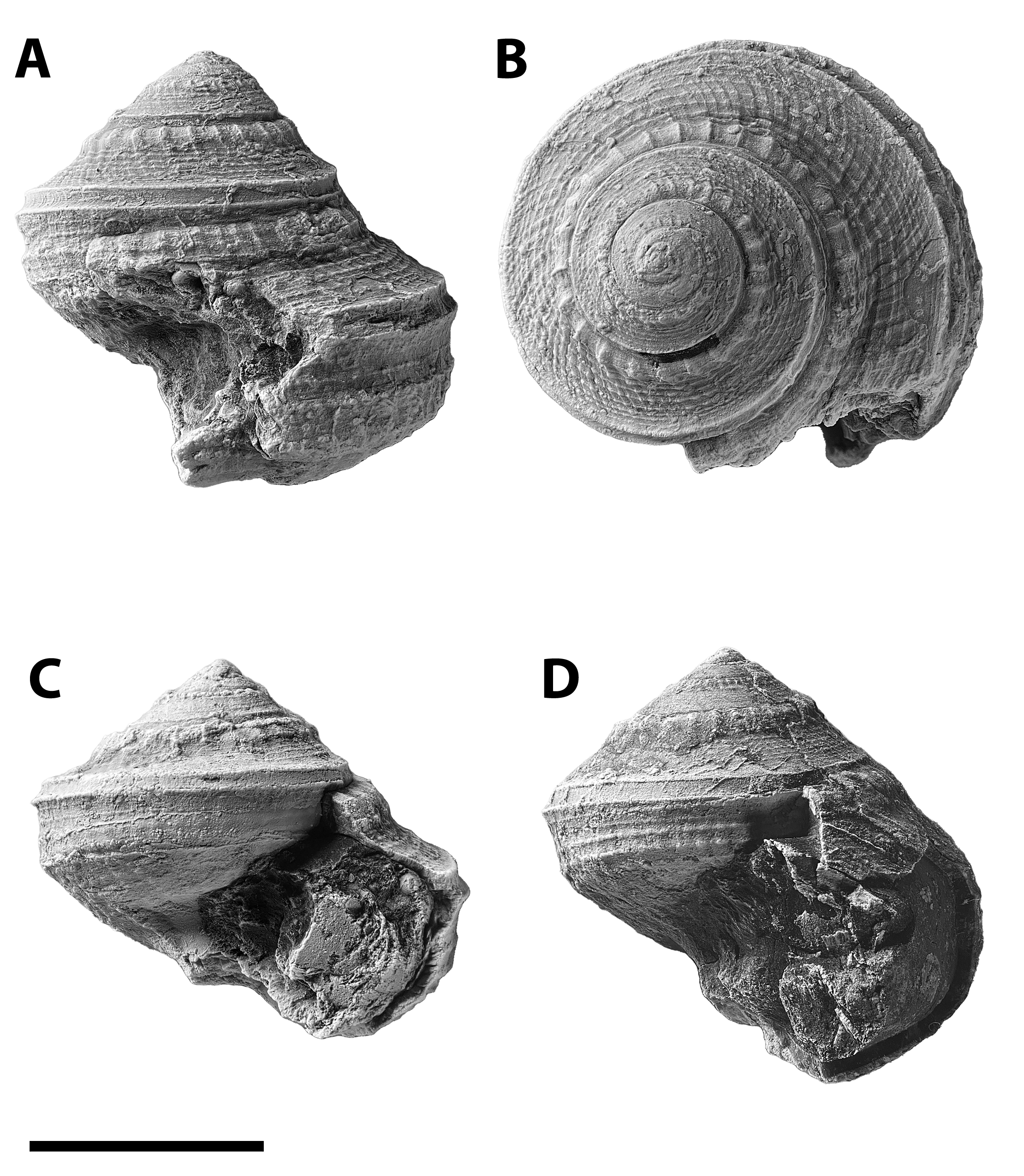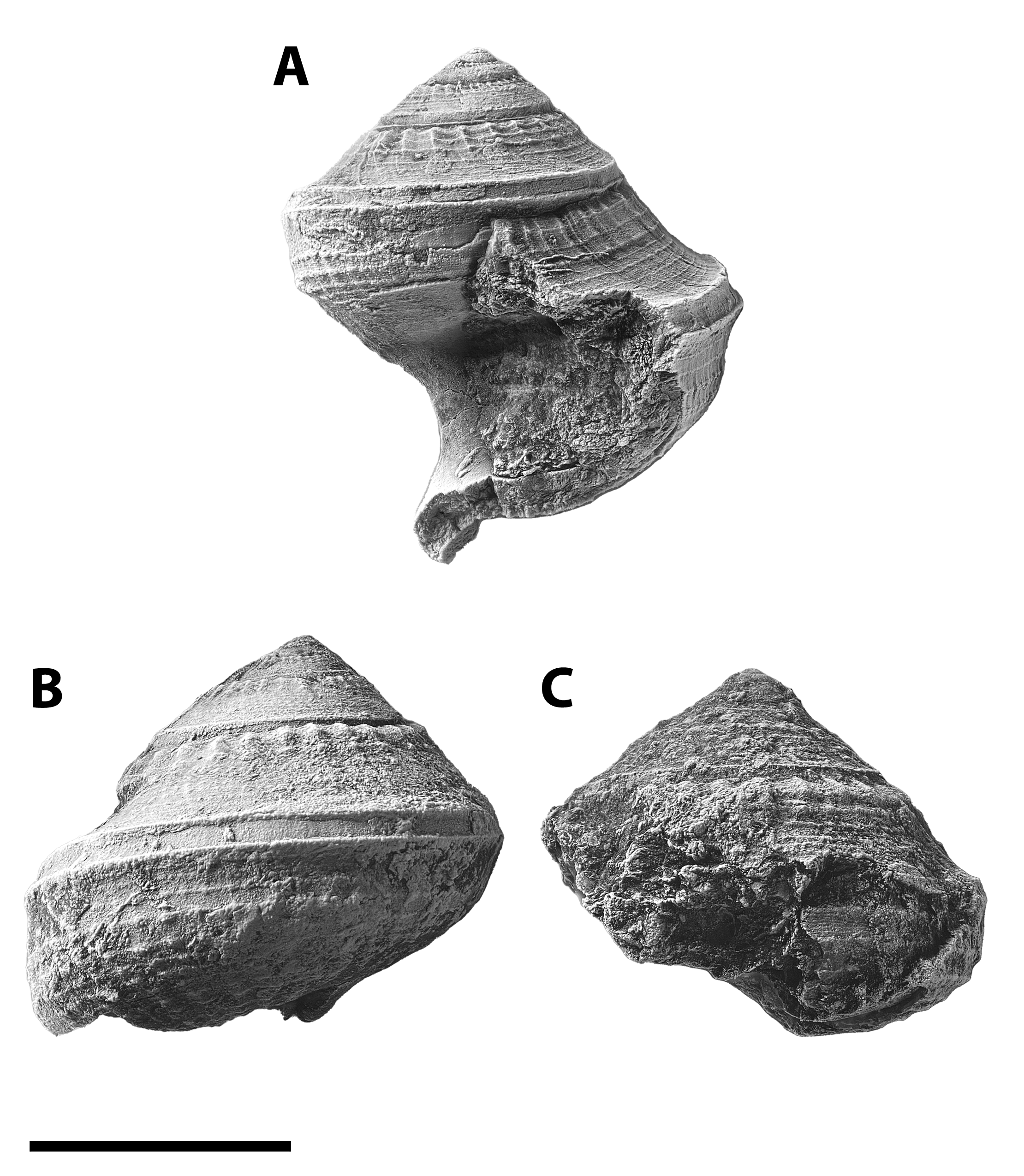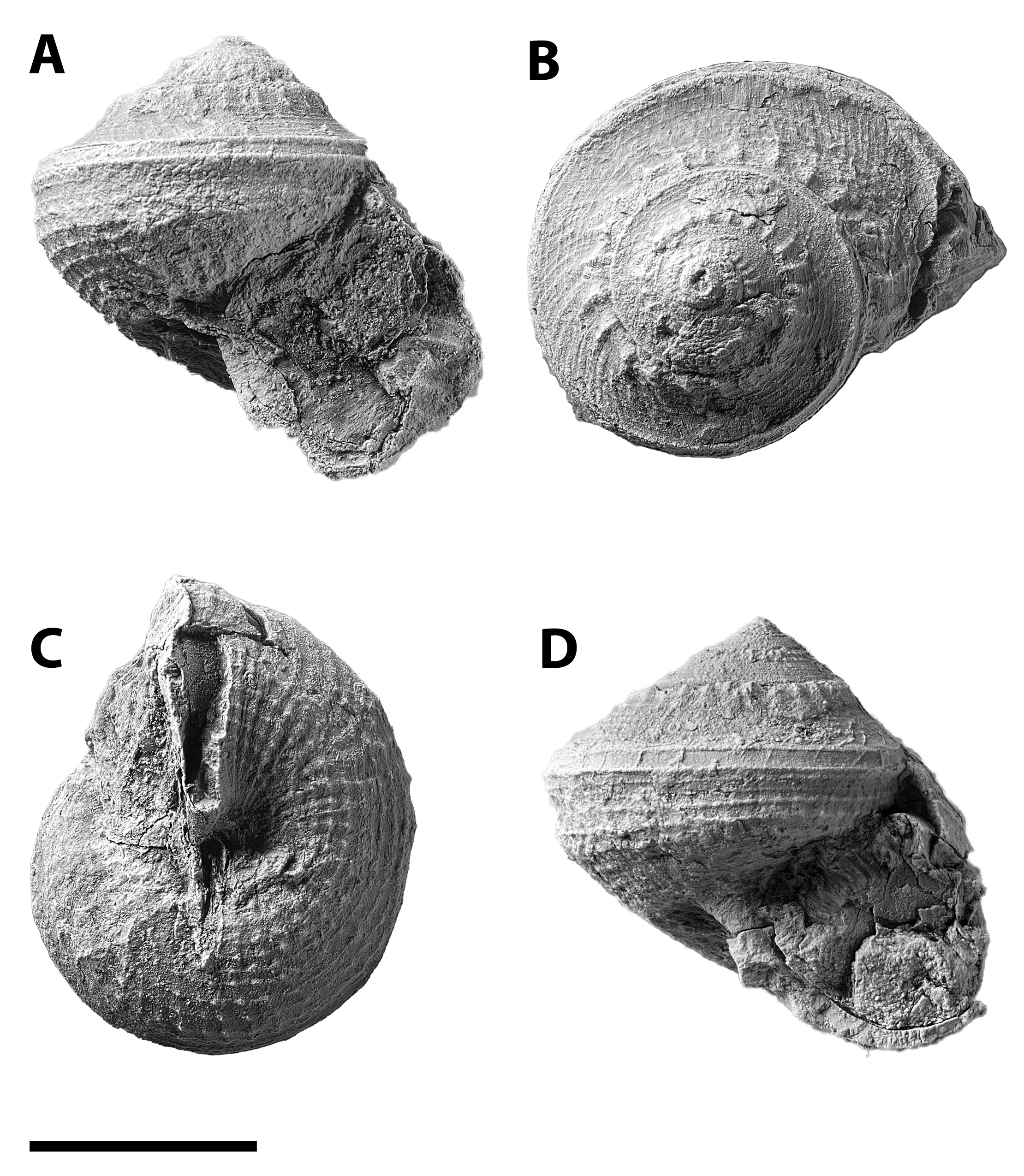Order Pleurotomariida Cox & Knight 1960
Superfamily Eotomarioidea Wenz, 1938
Family Gosseletinidae Wenz 1938
Genus Glabrocingulum Thomas 1940
Since the early 1800s, several authors (Norwood & Pratten 1855, others) have placed species of fossil gastropods under what became a catch-all genus, Pleurotomaria Defrance 1826. If a gastropod had a selenizone (a slit shell), it probably ended up in the genus. While authors divided and assigned several to new or different genera, Glabrocingulum was one of the last to receive reassignment. Thomas (1940) named Glabrocingulum during her review of the Scottish Carboniferous Pleurotomariidae.
Wenz named the Eotomariidae for shells with a slit appearing on the outside of the aperture with a concave selenizone, usually at mid-whorl. Today, the name is used for a superfamily, family, and subfamily. Gordon and Yochelson (1987) named the tribe Glabrocingulides, noting its “anamphalous to minutely phaneromphalus” umbilicus and “projecting flanges” on either side of the selenizone among other features that together are diagnostic for Glabrocingulum. The genus is also common; the pair said that Glabrocingulum is North America’s most abundant Pennsylvanian gastropod genus.
Glabrocingulum are uncommon but easy to identify from either Armstrong County locality. The pleural angle ranges from 96–112 degrees, according to Karapunar et al. (2022). The genus is often misidentified; the authors spent five paragraphs making and explaining corrections to previous errors in the literature. The spire and base share the same shape, with a rounded base. The selenizone with the bordering flanges has prosocline ornament in the upper whorls and opisthocline lines immediately below the selenizone flange. The specimens tend to be smaller and are not always preserved with great detail.
Glabrocingulum Plates



References
- Norwood, J. G., and Pratten, H., 1855. Notice of fossils from the Carboniferous Series of the western states belonging to the genera Spirifer, Bellerophon, Pleurotomaria, Macrocheilus, Natica, and Loxonema, with descriptions of eight new characteristic species. Journal of the Academy of Natural Sciences of Philadelphia 3:71-77
- Thomas, E. G., 1940. Revision of the Scottish Carboniferous Pleurotomariidae. Transactions of the Geological Society of Glasgow 20:30-72

Late Carboniferous Fossils from the Glenshaw Formation in Armstrong County, Pennsylvania
Preface | The Photographic Process
Localities: Locality SL 6445 Brush Creek limestone | Locality SL 6533 Pine Creek limestone
Bivalvia: Allopinna | Parallelodon | Septimyalina
Cephalopoda: Metacoceras | Poterioceras | Pseudorthoceras | Solenochilus
Gastropoda: Amphiscapha | Bellerophon | Cymatospira | Euphemites | Glabrocingulum | Meekospira | Orthonychia | Patellilabia | Pharkidonotus | Retispira | Shansiella | Strobeus | Trepospira | Worthenia
Brachiopoda: Cancrinella | Composita | Isogramma | Linoproductus | Neospirifer | Parajuresania | Pulchratia
